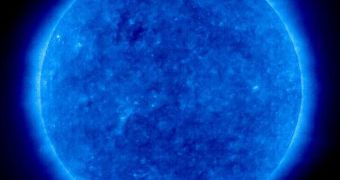For many years, researchers have known that humans lack the ability to heal damage in their DNA caused by overexposure to the ultraviolet (UV) wavelengths in sunlight. Most animals and some plants pose this ability, but we apparently don't have the enzymes needed for the job. In a recent series of scientific investigations, researchers looked at how these special molecules repaired the damage, and described the complex chemical reactions that ensued in the latest online issue of the esteemed scientific journal Nature, ScienceDaily reports.
The science team, based at the Ohio State University (OSU) and led by physicist and chemist Dongping Zhong, looked at the enzyme's mechanism of action at the atomic level, which allowed them to untangle all aspects of the healing process. This type of investigation, they say, is extremely important towards preventing and remedying sunburns, and also for preventing skin cancer. The latter condition is oftentimes a consequence of overexposure to UV sunlight, which causes cells to mutate by affecting their DNA.
The enzyme the team looked at is called photolyase. In the journal entry, the group explains that the chemical is capable of injecting a single electron and proton into each damaged DNA strand. Though it only takes a few billionths of a second for the healing process to take place, the team says that the series of chemical reactions that ensue are extremely complex. “It sounds simple, but those two atomic particles actually initiated a very complex series of chemical reactions. It all happened very fast, and the timing had to be just right,” says Zhong.
He is the Robert Smith Associate Professor of Physics at OSU, as well as an associate professor in the departments of chemistry and biochemistry. “People have been working on [determining how photolyase repairs damaged DNA] for years, but now that we've seen it, I don't think anyone could have guessed exactly what was happening,” the scientist adds. He explains that the team used engineered strands of DNA for the investigation, which the team then exposed to UV radiation. They then took a series of “pictures” of what was going on, using ultrafast light pulses.

 14 DAY TRIAL //
14 DAY TRIAL //